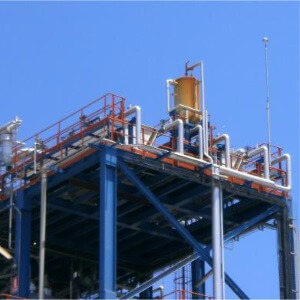Description
What Is The Dinnteco Lightning Arrester
The only LPS (Lightning Protection System) whose operating principle is based on constantly balance the surrounding electric field, eliminating the possibility of an ASCENDING STREAMER being produced withint it radius of coverage and thus PREVENTING THE LIGHTNING FROM FORMING.
 ELECTROMAGNETIC SHIELD
ELECTROMAGNETIC SHIELD
A lightning strike produces a electromagnetic pulses (EMP) that affect electrical systems and electronic equipment. Its INNOVATIVE TECHNOLOGY is able to minimise the negative effects by 60% to 90%.
Technology
During storms, a potential difference between clouds and earth is created. As a consequence an increase of charge concentrations on prominent spots is generated. The Dinnteco device is responsible for transforming these charges in a weak current grounded in real time and continuously. Arising of that, we can say that this technology is based on the continuous balancing of the variable electric fields in order to avoid the upward leader generation in the protected area.
How it works
Defined as a passive collector system of electrostatic currents on time, that takes them to ground. The operating principle is based on balancing or compensate the variable electric field on the environment, avoiding the upward leader on the DDCE and on to the protected structure.

Separate positive and negative charges are produced inside clouds (electric field).
The Dinnteco Lightning Arrester compensates for variations in the electric field, shunting them to earth in the form of small leakage currents to rebalance the field.
This prevents the creation of the conditions of charge accumulation and saturation of the electric field which produce an ascending streamer, PREVENTING LIGHTNING FROM BUILDING UP within the protected area.
The Results
Prevents the creation of upward leaders in the protected structure, avoiding the lightning formation
Becoming an effective lightning protection system. Acting as an electromagnetic shield

As it can be appreciated in the following lightning density maps, the influential areas where the DDCE is installed, have experienced a considerable change in the density of lightning strikes, showing a meaningful decrease between the periods 2003-2007 and 1997-2002, when no DDCE installations existed.
What Makes The Dinnteco Lightning Arrester The Best?
Because it ELIMINATES the RISK of a DIRECT LIGHTNING STRIKE
Because it MINIMIZES the effects of electromagnetic pulses (EMP)
Because it GUARANTEES BUSINESS CONTINUITY
Because it GUARANTEES THE SAFETY of both people and systems.
and also because it SAVES MONEY
Comparison between DDCE and conventional lightning conductors
Approvals
 | BUREAU VERITAS ESO36861 UNE-EN IEC 62305:2012 – Lightning Protection StandardLightning strike risk security – TBC (Technical Building Code) SU8 NBR 5419:2005; IRAM 2184:2011; CAN/CSA B72M87(R2013); NTC 4552:2008; SANS 10313:2012; AS/NZS 1768:2007; NFPA 780:2008 |
 | QUALITY ASSURANCE STANDARD ISO 9001:2008 – Quality assurance system |
 | CE MARKING The DDCE equipment is compliant with the product security and working limits of Electromagnetic Compatibility, under EC Labeling requirements.Directive 2001/95/CE – Product Safety Directive 92/31/EEC – Electromagnetic Compatibility Directive 73/23/EEC – Low voltage equipment Certified to IEC standards – EN 61000-6-1 (1,2,3,4):2002, EN 61000-4-2 to EN 61000-4-9, EN 55011 to EN 55022 |
 | NATO APPROVAL NCAGE:720CB – Recognized within the NATO Codification System (NOC) under code NCAGE 720 CB DDCE is currently in use in several NATO installations. |
 | SPANISH TECHNICAL BUILDING CODE CTE, SU8 – Safety from hazards due to lightning |
 | HEALTH AND SAFETY AT WORK ACT RD 614/2001 of 8 June – Minimum requirements regarding the safety of workers from electrical hazards |
DDCE Installed Sites
Airports – Control Towers, Radars




![]()
Meteorology – Radars, Radomes



![]()
Oil and Gas and Industrial Plants – Towers, Tanks




![]()
Civil – Structures, Tower, Temples, Statues, Cranes, Bus Stops, Train, Pedestrian Bridge, Mines







![]()
Case Studies
1. Telecommunication Tower – Analysis of Effectiveness of DDCE at Las Pardinas
2. Installation on Chikyu, JAMSTEC Research Vessel
3. Installation at Ushiku Daibutsu / Giant Buddha Statue in Ibaraki, Japan

















